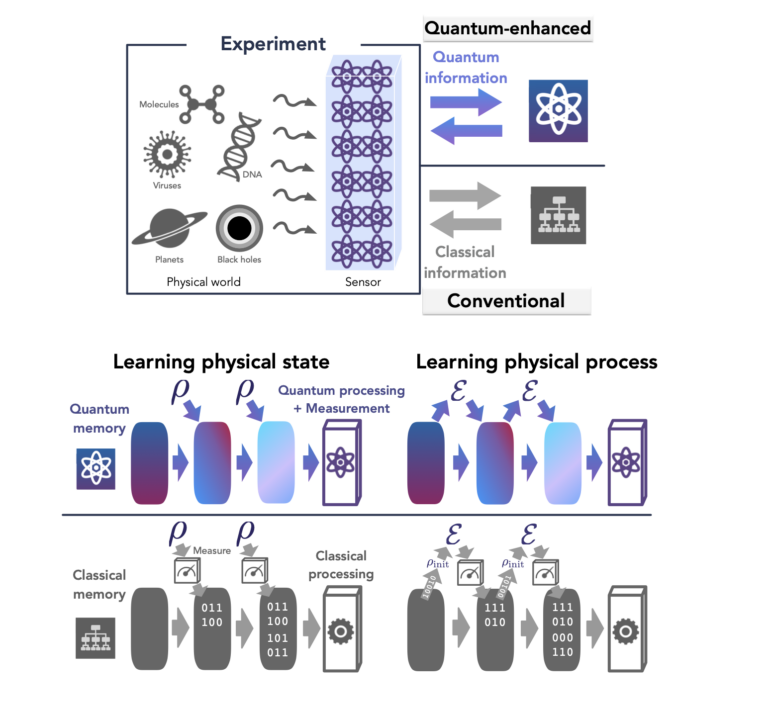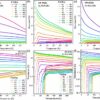Researchers from the Department of Energy’s Oak Ridge National Laboratory have taken a major step forward in using quantum mechanics to enhance sensing devices, a new advancement that could be used in a wide range of areas, including materials characterization, improved imaging and biological and medical applications.
Quantum mechanics is how we understand extremely small objects that have characteristics of particles and waves. Its application in enhancing sensing devices aims to achieve more accurate measurements that would not be accessible otherwise. Quantum sensing is used in a variety of challenging environments and applications, including detecting oil leaks in underwater pipelines, probing biological samples, enhancing medical devices and detecting dark matter throughout the universe.
Scientists from ORNL and the University of Oklahoma have utilized the unique properties of quantum states of light to implement parallel quantum-enhanced sensing. The type of light used in this experiment is in squeezed states that have less noise than classical light, or light with electromagnetic wavelengths that are visible to the human eye.
These results open the door for highly parallel spatially resolved quantum-enhanced sensing techniques and complex quantum sensing and quantum imaging platforms. This research builds on previous work on quantum enhanced plasmonic sensing using quantum light, which revealed that plasmonic sensors could be enhanced with quantum light.
The results of the study were published in the journal ACS Photonics.
As part of their experiments to better leverage the quantum properties of light for sensing, researchers used bright twin beams of light to probe a four-sensor quadrant plasmonic array—a sensing system that consists of four individual sensors arranged in a quadrant layout.
Building on their previous work on plasmonic sensing, their findings show that it’s possible to independently and simultaneously measure local changes in refractive index for all four sensors with a quantum advantage. This allows for the sensors to be probed at the same time rather than serially or sequentially, which is needed for research such as dark matter detection or imaging applications. The research led to quantum enhancement in sensitivity for all four sensors in the range of 22% to 24% over the corresponding classical configuration.
“Typically, you use the fact that you have correlations in time and take advantage of noise levels below the classical limit, that is squeezing, to enhance a measurement and obtain a quantum enhancement,” said ORNL researcher Alberto Marino. “What we did in this case was combine both the temporal and spatial correlations to probe several sensors at the same time and get a simultaneous quantum enhancement for all of them.”
Marino, who serves as group leader for Quantum Sensing and Computing at ORNL and has a joint faculty appointment at the University of Oklahoma, added that the goal of this research was to extract significantly more information from a system while maintaining a quantum advantage.
One area where this will be used in practice by the lab is in detecting dark matter, which scientists believe is the unaccounted-for matter that stretches across the universe. This type of matter does not interact with light, but does exert a gravitational force, so detecting dark matter requires large sensor arrays because of its weak interaction with standard matter.
“We now have a project where we’re doing dark matter detection that will require an array of sensors,” said Marino. “Our work on parallel quantum sensing will play an important role there because it is a first step toward probing multiple sensors simultaneously and will allow us to go beyond our current work with a single optomechanical sensor.”
For dark matter detection, the ORNL team is currently using quantum states of light to enhance the sensitivity of an optomechanical sensor based on micro-electro-mechanical systems, or MEMS. The light is used to measure the acceleration that is imparted on the MEMS as a result of its expected interaction with dark matter. Moving forward, the source will be optimized to contain as many independently quantum correlated regions, or coherence areas, as possible. Each of these coherence areas will then be used to probe a sensor in the array.
“For example, the combination of parallel quantum-enhanced sensing and plasmonic sensors could make it possible to improve the detection of multiple pathogens in the blood at the same time, by having each sensor in an array detect a different thing,” Marino said.
More information:
Mohammadjavad Dowran et al, Parallel Quantum-Enhanced Sensing, ACS Photonics (2024). DOI: 10.1021/acsphotonics.4c00256
Provided by
Oak Ridge National Laboratory
Citation:
Researchers reveal quantum advantage that could advance future sensing devices (2024, October 16)



